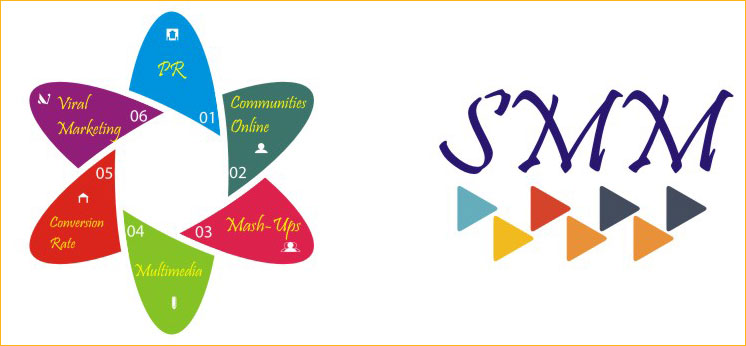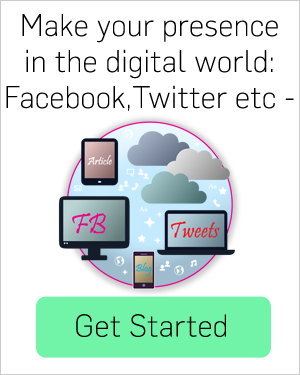Facebook and Twitter alone reportedly serve 1.5 billion users globally. Social media allows your business to extend well beyond the immediate geographic area. With social media you can cross county, state, and even national lines. Social media is therefore a very convenient and also cost–efficient way for augmenting brand visibility – which is great news for global manufacturers. But what about local dealers? Social media allows any business the benefit of increased exposure. Whether a global, national or local business.


Social Media Optimization(SMO)
Social media is an important part of your online presence that improves your chances of generating additional revenue and building customer loyalty. It allows customers, potential customers and other interested parties to engage easily via a channel that plays an important role in their everyday lives. Although not every social media channel will be relevant to each business, it’s definitely worth looking into your options. For example, Facebook and Twitter will serve a purpose for almost any business – it’s a great place to post news, tips, photos and videos and ask and answer questions.
In addition to Facebook and Twitter, you might find Instagram, Google+, LinkedIn, YouTube, Pinterest, Tumblr, FourSquare helpful. Make sure to research available channels and find out if they will work for you.
Instagram, for example, is a photo-sharing network, so it works wonderfully for businesses selling ‘beautiful– products such as jewelry, food or housewares. It’s important to consider your target demographic – Instagram has around 130–150 million users, over two-thirds of which are women between the ages of 18 and 35. With Instagram, you’ll also need to keep a smartphone handy to properly access your account and engage with your audience.
Once you’ve decided which social media channels to use, get a clear idea of the kind of content you can share. The more compelling and engaging your material is, the more likely your followers will like, comment and share your posts. Engagement is key to promoting your brand – not only will it make you more appealing to existing customers, the more positive social activity that goes on, the higher the chance is that their friends will be exposed to your brand and intrigued by what you have to offer.
When they do this, they’re engaging with your brand and their networks (friends, family, colleagues) are seeing that engagement and may be prompted to check you out for their own needs.
Social media marketing is the process of gaining website traffic or attention through social media sites. Social media marketing programs usually center on efforts to create content that attracts attention and encourages readers to share it with their social networks. The resulting electronic word of mouth (eWoM) refers to any statement consumers share via the Internet (e.g., web sites, social networks, instant messages, news feeds) about an event, product, service, brand or company. When the underlying message spreads from user to user and presumably resonates because it appears to come from a trusted, third-party source, as opposed to the brand or company itself, this form of marketing results in earned media rather than paid media.
Social networking websites
Social networking websites allow individuals to interact with one another and build relationships. When companies join the social channels, consumers can interact with them and they can communicate with consumers directly. That interaction feels more personal to users than traditional methods of strictly outbound marketing & advertising.
Social networking sites and blogs allow individual followers to “retweet” or “repost” comments made by the product being promoted. By repeating the message, all of the users connections are able to see the message, therefore reaching more people. Social networking sites act as word of mouth. Because the information about the product is being put out there and is getting repeated, more traffic is brought to the product/company.
Through social networking sites, companies can interact with individual followers. This personal interaction can instill a feeling of loyalty into followers and potential customers. Also, by choosing whom to follow on these sites, products can reach a very narrow target audience.
Social networking sites also include a vast amount of information about what products and services prospective clients might be interested in. Through the use of new SemanticAnalysis technologies, marketers can detect buying signals, such as content shared by people and questions posted online. Understanding of buying signals can help sales people target relevant prospects and marketers run micro-targeted campaigns.
Social media optimization (SMO) is the use of a number of social media outlets and communities to generate publicity to increase the awareness of a product, brand or event.
Types of social media involved include RSS feeds, social news and bookmarking sites, as well as social networking sites, such as Twitter, and video and blogging sites. SMO is similar to search engine optimization in that the goal is to generate traffic and awareness for a website. In general, social media optimization refers to optimizing a website and its content in terms of sharing across social media and networking sites.
Benefits of SMO
A new survey from Social Media Examiner reports 89% of small and medium–sized businesses report increased exposure and 75% report increased traffic as the top two greatest benefits of social media. But most businesses are still new to using social media with only 55% using social media to grow their business for two years or less. With that said, two years is barely enough time to learn the ins–and–outs of being successful with social media marketing and understanding all the possibilities.
If you are new to social media, or still just testing the waters, you should consider the numerous advantages of social media marketing for your business.
-
1. Increased Business Exposure
-
2. Insight About Your Customers
-
3. Reduced Marketing Expenses
-
4. Lead generation
-
5. Extremely Targeted
-
6. Competitive Advantage
-
7. Analytics and Reporting
-
8. Strengthen Customer Loyalty
-
9. Rise in Search Engine Rankings
-
10. Increased Website Traffic


